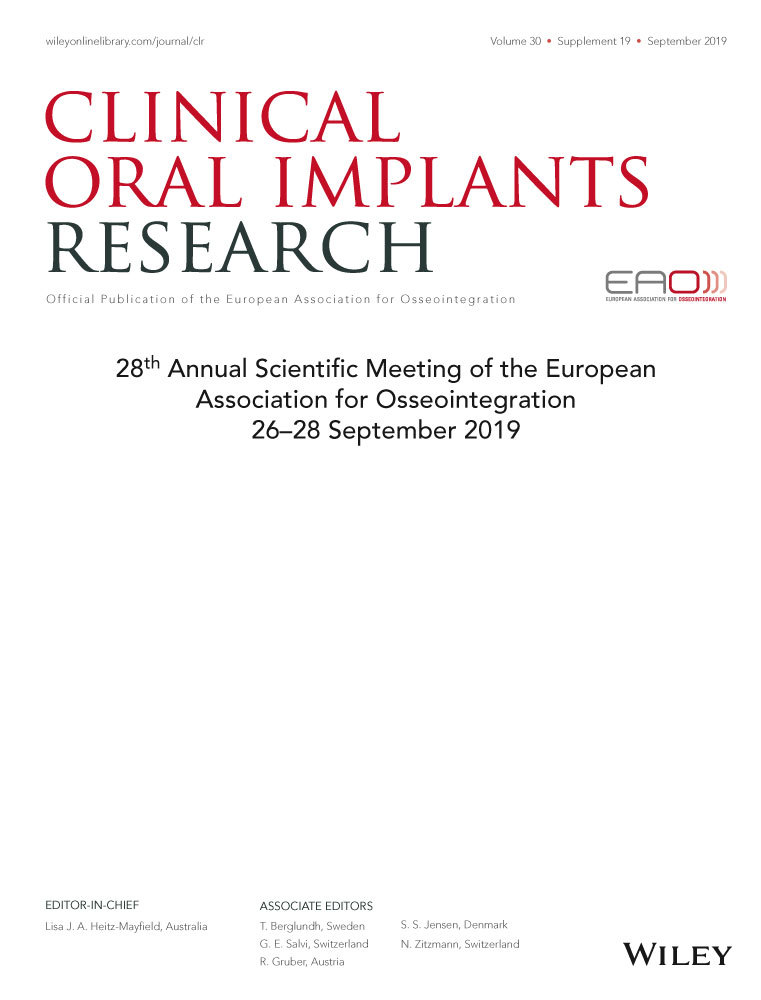Bone regeneration with the injectable biphasic calcium phosphate – Preliminary histological findings
16098 POSTER DISPLAY BASIC RESEARCH
Background
Human bone has excellent regenerative potential. Bone remodeling is a continuous, balanced process, which includes activities of bone resorption and new bone formation. A wide variety of bone substitutes have been developed in order to avoid complications related to the use of autogenous bone, one of them being biphasic calcium phosphate (BCP). Maxresorb® inject (Botiss Biomaterials GmbH) is BCP in an injectable form composed of hydroxyapatite and beta-tricalcium phosphate in a ratio of 60 40.
Aim/Hypothesis
The primary aim of this study was to histologically evaluate the potential for bone regeneration of Maxresorb® inject. The secondary aim was to clinically assess the handling of the Maxresorb® inject and the occurrence of complications during the healing period.
Material and Methods
This study is designed as a prospective single-arm clinical trial and consists of two stages. In the first stage of the study, a total of 20 extraction sockets in 20 patients were augmented with Maxresorb® inject and covered by a resorbable membrane (Collprotect®, Botiss Biomaterials GmbH). Monitoring of the wound healing was done at day 1, 5 and 10 postoperatively. Following 6 months of healing, in the second stage, a re-entry procedure at the site of the pre-existing defect was performed in order to collect bone biopsies for histological analysis and for dental implant placement. Thus far, 5 biopsies were available for histological analysis. Biopsies were prepared according to routine methods, sectioned with a microtome and stained with hematoxylin and eosin. Finally, the specimens were examined under the light microscope.
Results
Preliminary results- The preliminary histological findings of the biopsy specimen showed bony integration of the BCP granules into newly formed bone within the peripheral regions of the implant preparation sites. The granules were fully incorporated into bone tissue, and there were no histological signs of tissue inflammation. Procedure-wise, Maxresorb® inject showed easy handling and excellent filling of the extraction sockets. Wound healing was uneventful and without complications.
Conclusion and Clinical Implications
In the present study, the regenerated bone was evaluated by descriptive histological examination. Maxresorb® inject showed osteoconductive potential for bone regeneration. In addition, due to its viscosity, Maxresorb® inject had excellent handling properties and filling of the bone defect, therefore simplifying the surgical procedure and positively influencing patients’ subjective experience. However, further research is needed to complete histological and clinical pieces of evidence of osteoconductive properties of Maxresorb® inject.




